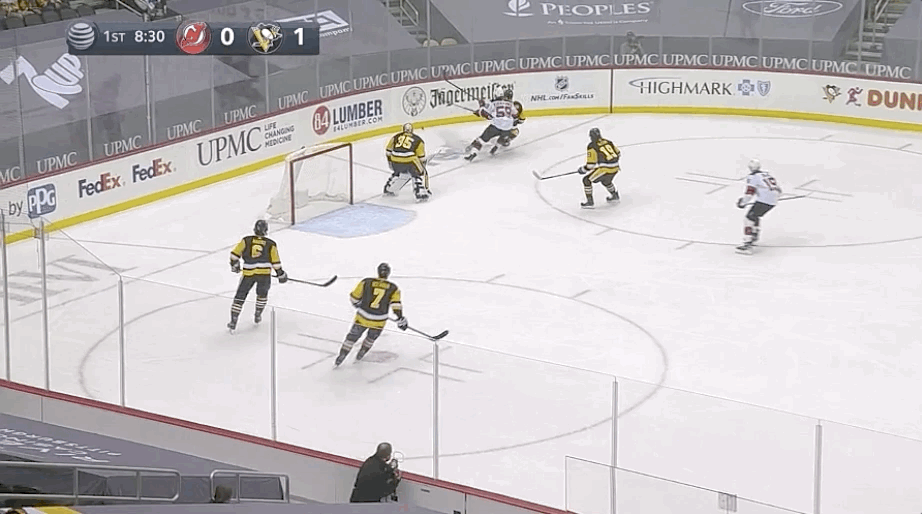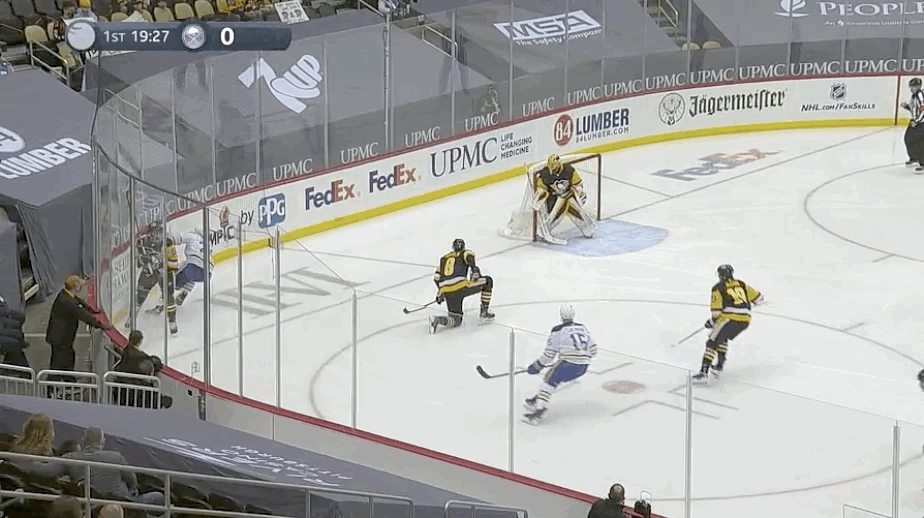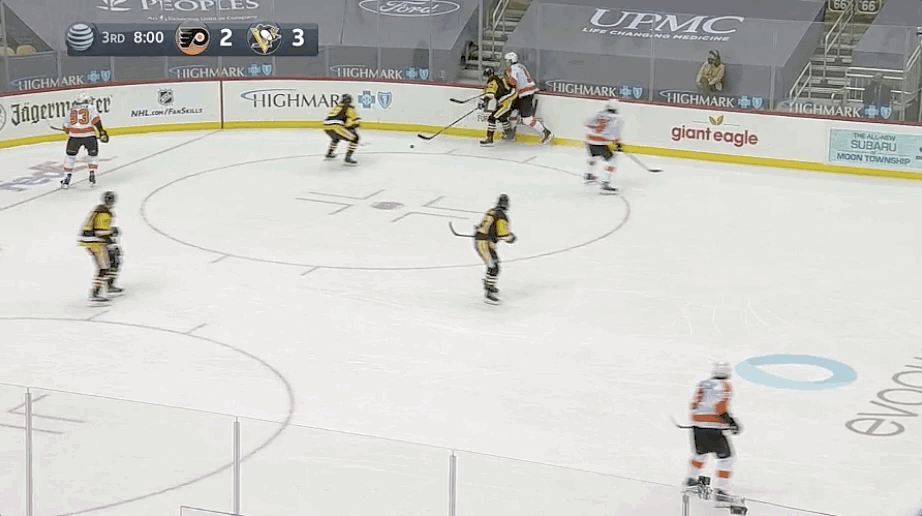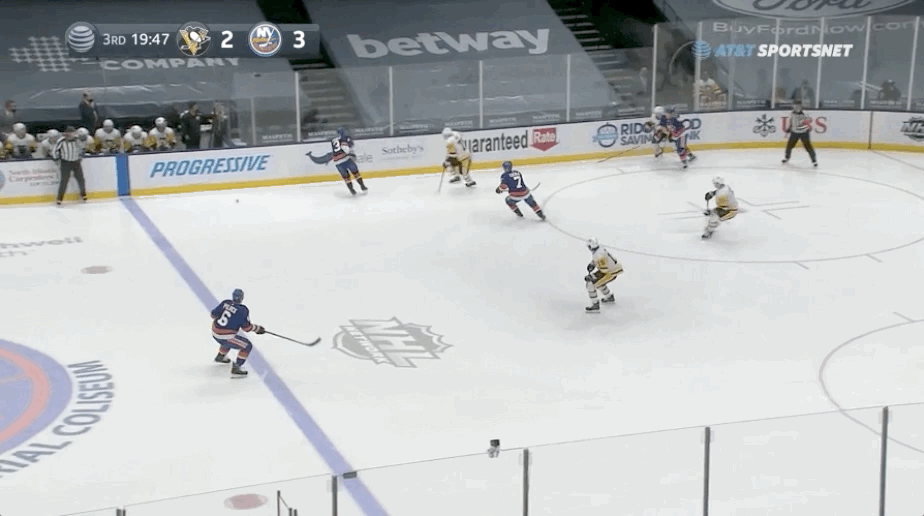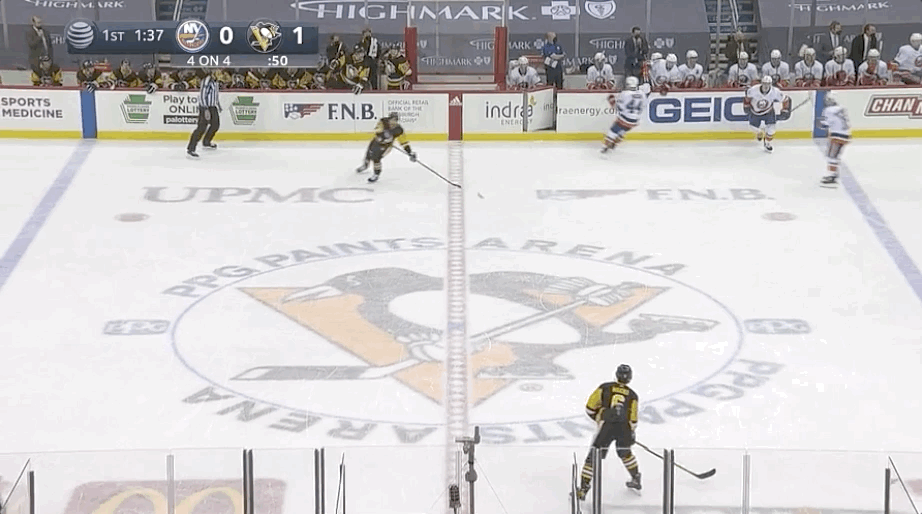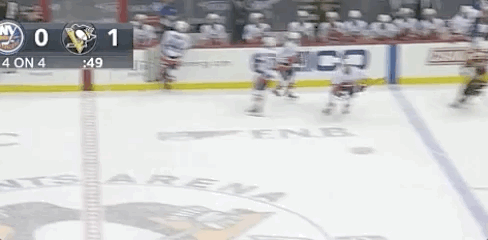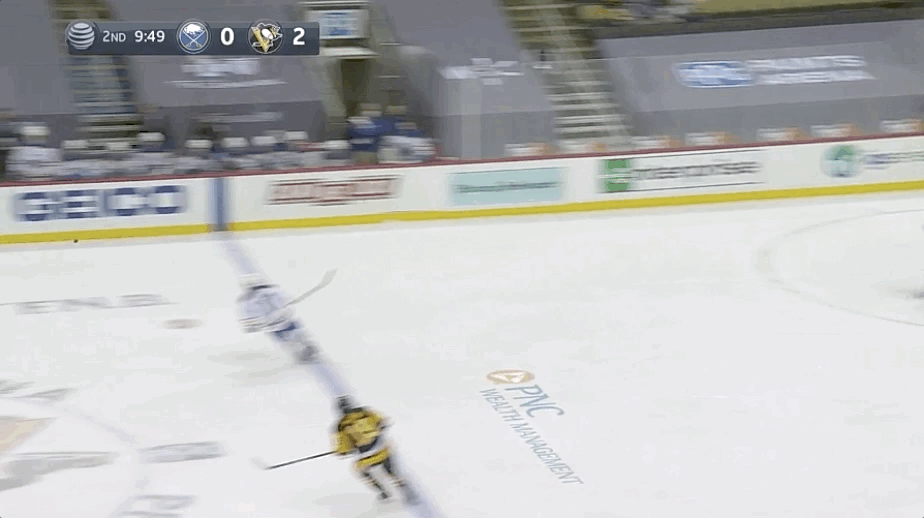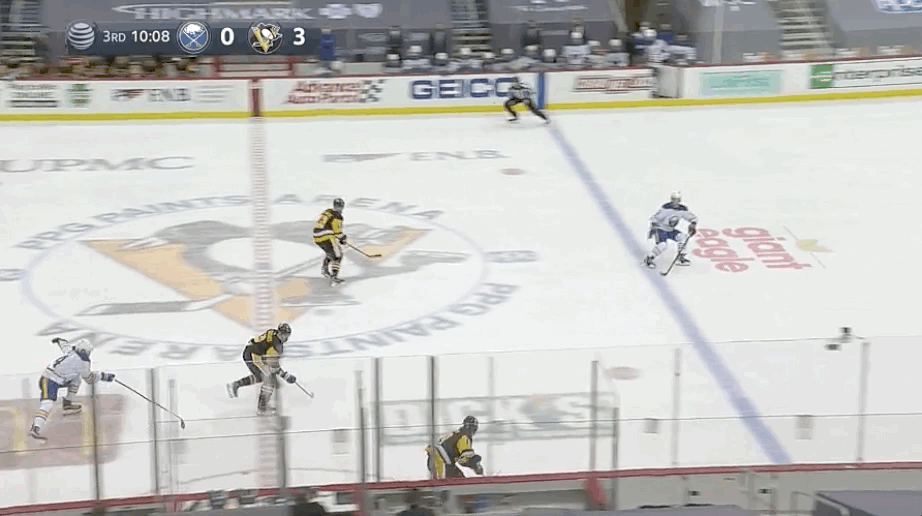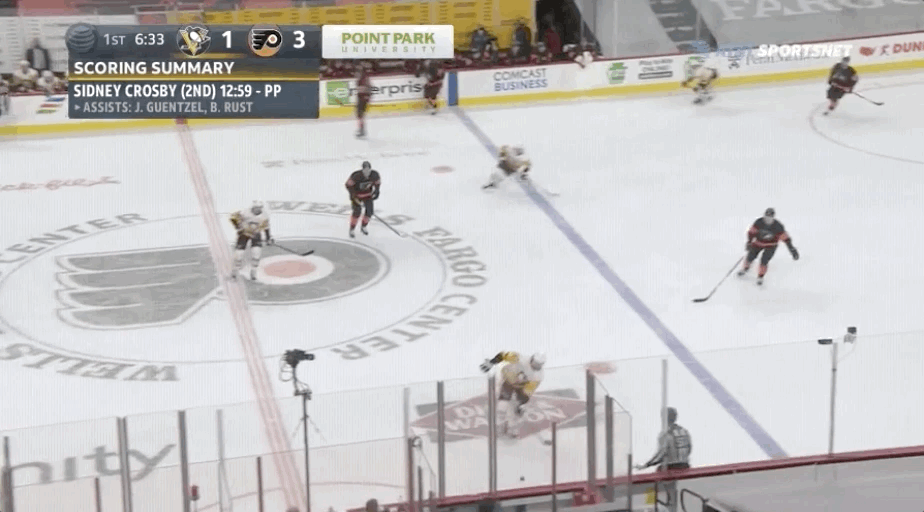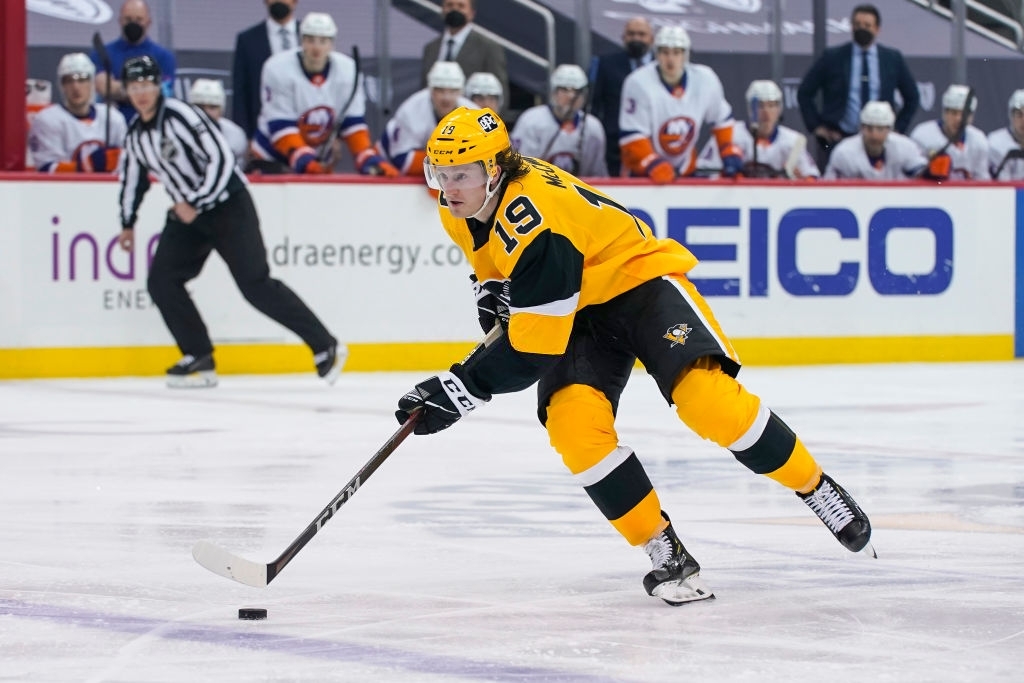
It wasn’t long ago that Jared McCann went 22 consecutive games without a goal to finish out the Covid-shortened 2019-20 regular season.
Just over a year later, he’s having a breakout season in which he’s been one of the Penguins’ best players at both ends of the rink.
By the end of last season we knew that McCann was an exceptional defensive player, but his offensive game left a bit to be desired. There’s no denying his wicked shot, but his tendency to gain the zone and fire the puck from the top of the left circle and high slot resulted in a lot of one-and-done opportunities for the Penguins.
When the Penguins were able to sustain pressure in the offensive zone with McCann on the ice, they were often limited to working the puck around the perimeter and settling for low-danger point shots.
This season, McCann has maintained his strong defensive impacts while taking his offense to the next level. Not only does he pace the Penguins with 2.8 primary points per hour of ice time, the Penguins are scoring 4.6 goals per hour with him on the ice at 5v5. That’s tied for the highest mark of any NHL skater to play at least 200 5v5 minutes this season (Daniel Sprong happens to be the player he’s tied with, though a quick glance at his play-driving impacts leads me to believe he’s had some extreme on-ice luck).
Similar to Kasperi Kapanen, who I wrote about a few weeks ago, McCann is due for a pullback on the rate at which the Penguins score when he’s on the ice. The difference between the two is that the impending pullback for McCann shouldn’t be nearly as stern, considering the Pens are generating 2.82 expected goals for per hour with him on the ice at 5v5 (best on team by 0.34), compared to 2.14 when Kapanen is on the ice at 5v5.
If you’re still unimpressed, consider that McCann ranks third among NHL forwards in Evolving Hockey’s GAR (goals above replacement) model, trailing only Connor McDavid and Leon Draisaitl despite having played fewer minutes than every skater inside the top 50.
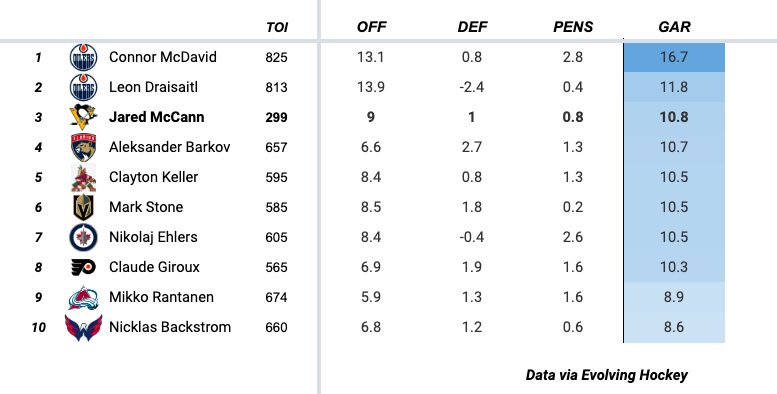
He paces all NHL forwards in GAR per hour (minimum 200 minutes TOI), and it isn’t particularly close. There are just 11 forwards across the league providing one goal above replacement per hour this season. McCann is providing over two.
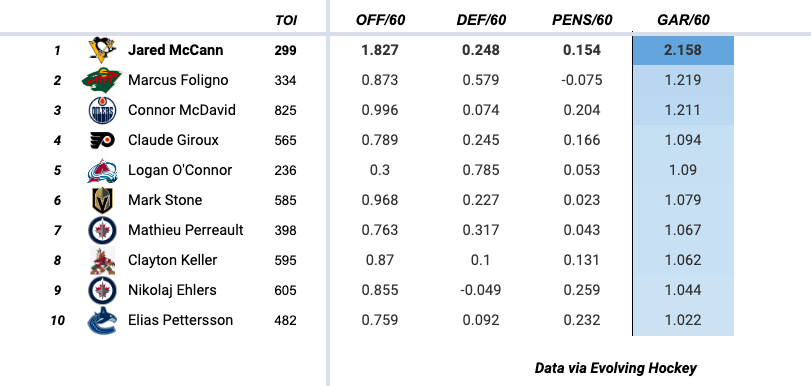
It’s overwhelmingly unlikely impossible for McCann’s impacts to remain this strong for the remainder of the season. With that being said, an improvement he made over the offseason has been the biggest reason for his success thus far:
His skating.
Since being traded to the Penguins midway through the 2018-19 season, McCann has always been one of their faster skaters, but in today’s NHL, straight-ahead speed alone isn’t enough to make you an impactful player.
The best skaters aren’t the ones that rely on their speed, but the ones who complement their speed with strong edges and smart routes, whether it’s carrying the puck up ice or angling the puck carrier on the forecheck.
The biggest skating improvement McCann made over the offseason was his ability to control his edges.
In years past, McCann relied on his straight-ahead speed. Now that he’s stronger and more comfortable on his edges, he’s been able to take more powerful strides, as well as implement many, many more crossovers.
In the following clip, McCann changes direction on a dime in the d-zone to swing with the loose puck. As he corralled it, he used crossovers to escape pressure and push the puck up ice, eventually hitting his outlet for a clean zone exit.
Have you ever wondered how Connor McDavid and Nathan Mackinnon are able to routinely go coast to coast with the puck while evading every defender in their way?
Part of it is their speed, absolutely, but the biggest reason is because they use linear crossovers.
Instead of taking forward strides, they cross their feet to not only build speed, but keep defenders on their toes because they are able to cut either direction instantaneously.
McCann has picked up on this as well, and is now using linear crossovers more often than not when skating the puck up ice.
In the next clip, McCann crossed over seven consecutive times to exit the zone. He was already to center-ice by the time he took his first forward stride, at which point he was able to barrel into the offensive zone for a shot.
McCann is even implementing linear crossovers when he doesn’t have the puck.
The next clip is a thing of beauty. After he dishes the puck to Cody Ceci, who has a step on him, he crosses over all the way up ice to not only keep up with the puck carrier, but to make it harder for the Philadelphia backchecker to track him. When he’s bobbing in and out of lanes, it becomes a guessing game for the backchecker as to where he’ll end up, but that only matters if they’re able to catch him.
McCann found himself wide-open and made a slick one-touch pass out front to Ceci who buried it. (Peep xG God Mark Friedman with the no-look pass to McCann).
None of this is to say that McCann doesn’t recognize when it would be optimal to just turn on the burners and get up ice in straight-ahead fashion.
Below, he creates a 2-on-1 with Evgeni Malkin by skating as hard as he can with forward strides. Malkin found him, and he wired it home.
McCann’s improved edgework and crossovers goes beyond skating up ice. He’s also using those tools to build momentum and create separation in tight spaces.
In the next clip, McCann is hustling to tag-up at the blue line as John Marino enters the zone. Typically, players will fly out of the zone just as the puck is crossing the blue line, taking themselves completely out of the play.
Instead, McCann takes a wide angle and uses cross overs to tag up, as well as stay below New York’s defenders. He flew into the slot wide-open as Marino hit him with a pass that he sent to the back of the net.
Notice how wide McCann’s angle is. He did this so that he could dig his edges into the ice even further, making his strides more powerful to build speed and momentum with relatively little space.
Next up, McCann creates a dangerous scoring opportunity by combining an open-ice hip-turn with crossovers.
Rather than catching a pass as he’s headed straight into the heart of Buffalo’s defense, McCann opened his hips to receive the entry pass to change the angle.
Immediately after dropping the puck off to Evan Rodrigues, McCann powerfully crossed over twice to go right around Henri Jokiharju and to the front of the net for a scoring chance.
Later in the same game, McCann did a great job of using his feet to manipulate the defender to open up a passing lane off the rush.
Look closely at the step he takes with his right foot as if he were to attack the slot. This forced Brandon Montour to poke check, but as soon as he went for it, McCann moved the puck to his backhand and slipped the puck across the royal road. The pass was a bit off the mark, but the details are there.
The final clip is a nearly identical situation, except this time McCann fired a hard shot off the far pad that created a rebound for Brandon Tanev, who was able to roof it for a Penguins goal.
It’s funny to think that a certain Penguins beat writer dubbed McCann as prime trade-candidate just over a month ago.
McCann will never be a guy that the Penguins can heavily rely on for offense, but the improvements he made to his skating over the offseason have solidified him as a second-line player, whether that be at center or at wing.
Thanks for reading! Let’s talk hockey on Twitter. Follow me @shireyirving.
All data via Evolving Hockey
All highlights via NHL.tv
Add The Sports Daily to your Google News Feed!
